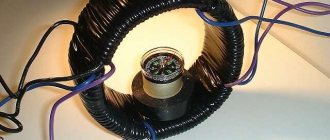A standard question in the industry is how to deal with static electricity in production. Such a charge, accumulating on work surfaces, can lead to damage to expensive equipment, failure of entire production lines, injury or, in serious cases, even death of an employee. The nature of the phenomenon practically eliminates spontaneous dissipation: a charge is formed on the surface of the dielectric, in close contact (mechanical friction) with the conductor, between two dielectric shells.
The danger of static electricity in production is associated with the possibility of charge accumulation also under strong mechanical influence (impact, crushing, rupture) of the dielectric. Another dangerous type of static is atmospheric accumulation, which manifests itself as lightning. Potential removal is an important issue for industry: it will carry out the necessary measurements and take measures to neutralize the danger. We have our own mobile laboratory containing all the necessary instruments for measuring the danger of static electricity. After completion of the work, LABSIZ will generate a technical report suitable for submission to any supervisory authorities. It is possible for electricians to visit sites in Moscow and populated areas of the Moscow region.
Reasons for charge formation
Potential dangers for equipment and workers inevitably arise in industry: the process is not associated with technology violations and requires constant prevention (prevention).
Static electricity in production is generated, in particular:
- On belt drives, due to constant friction of dielectric surfaces that accumulate charge well.
- When moving hydrocarbons (oil, natural gas, rectification products) through pipelines.
- When transmitting any rarefied gaseous compounds through pipes.
- When drawing, processing, cutting paper: at pulp and paper mills, in printing shops.
- Protection against static electricity in the oil industry is also necessary when filling/emptying tanks for temporary storage of hydrocarbons.
- During the operation of weaving and spinning equipment: dielectric threads are constantly in dynamic contact with the metal base.
- When preparing a composition for the production of rubber glue in a mixer.
- When a large amount of organic fine particles (dust) accumulates in the workshop.
- The danger of accumulating static electricity charges is also associated with workers wearing uniforms made of silk, nylon, lavsan, and other materials that accumulate charges well.
Static formation is also possible in other technological processes; To make sure that there is no danger, measurements professionally performed by LABSIZ specialists will help.
How and where does static electricity come from?
Nowadays, the causes of static electricity are:
- The presence of contact between the surface of one material and a second material with further detachment (an example is the friction of the human body on a woolen carpet on the floor).
- The presence of ultraviolet radiation, radiation, etc.
- Due to a sharp drop and rise in temperature.
The most common cases of static electricity occur for the first reason. This process has not been fully studied, but at the same time it most accurately explains the origin of this phenomenon.
Statistics are not able to provide data on where exactly this discharge occurs more often: in everyday life or at work. His presence is defined everywhere.
Therefore, it is necessary to clearly identify the problem area and take control of it by adopting certain protective methods.
Rest assured: if you notice that any object has “sparkled,” then it is obvious that it has accumulated that same charge of static electricity. There is no need to remind that it is precisely this fact that indicates the danger and the need for prevention.
After all, it is precisely by accumulating a large charge that this or that object makes it possible to electrocute, for example, a production worker. Under such conditions, the discharge provokes a static shock for two reasons.
The first and most common is induced charge. It occurs if the condition of a person being in the field of electricity and picking up a charged object with his hands is met. The body of such a person accumulates a charge.
However, when using personal protective equipment to prevent electric shock, such as dielectric galoshes, or staying on a special mat while handling current, the charge will remain in the person.
To prevent it, you must touch a temporary portable ground. This way the charge will go into the ground, and the worker will receive a minor electric shock that is not dangerous to his life and health.
The above option to prevent the discharge of electricity occurs thanks to insulating shoes. Touching a charged object, the charge moves and is retained in the body, but when it comes into contact with an object that is a protective protective device, the discharge quickly leaves the body, accompanied by a slight blow.
Unfortunately, it is impossible to completely prevent getting into such a situation: either at home or at work. After all, it appears even when shoes and carpet made of artificial fibers interact.
While getting out of the car, you suddenly got an electric shock. Are you confused and don’t know what to do about it? And why can this happen?
While in the car, your body is electrified, so when you touch a metal object, in this case, a door, the previously accumulated charge is immediately discharged, going down the car into the ground.
Unfortunately, this is the only way to get rid of static electricity. There is no other way.
We also encounter the second reason every day and everywhere - the appearance of a charge on electronic devices.
Despite its prevalence, this type of charge occurs less frequently than the previously described one. Therefore, when working with such components, precautions should be taken to prevent discharge accumulation.
It is known that discharge occurs at very high voltage and very low current.
It would seem that simply brushing your hair on a dry air day can lead to a build-up of charge. At the same time, the current during release is negligible. So much so that it is imperceptible.
This is the whole point of discharge prevention: a low current value prevents static charges from causing harm during an instantaneous discharge.
If you encounter this phenomenon at work, with large-capacity metal structures, then, despite any precautions to prevent it, it is better to wear dielectric gloves. Regular latex ones, unfortunately, are not suitable for this.
Is spontaneous neutralization possible?
The main danger of static electricity, that is, breakdowns or electric shock to workers, cannot be eliminated in a natural way: “discharge” proceeds very slowly, and one cannot be sure that the current charge is quite insignificant. Spontaneous removal of potential occurs due to sinking into the ground or uniform distribution over the entire surface - the same options are also applicable for artificial processes that ensure the safety of electrical installations and people. The same methods eliminate the fire hazard of static electricity, which is expressed in the possibility of fire due to sparking or a sharp increase in temperature due to a short circuit.
If the potential is not removed, the gradually accumulating charge (it can reach 10,000 volts or more) leads to:
- Damage to a person who touches a charged surface. The current flows through the body, affecting the heart, parts of the nervous system, and sometimes other internal organs.
- Removing static electricity in production is necessary to prevent damage to raw materials or finished goods.
- Wiring breakdowns, short circuits, fires or explosions.
All of the above consequences have a negative impact on production: lines have to be stopped, expensive devices and components have to be replaced, and compensation has to be paid to victims. Protection against static electricity at work, carried out by LABSIZ, will help save the health of workers and the money of the enterprise.
Ways to neutralize static
The first and necessary condition for ensuring the safety of workers who find themselves in the zone of possible charge accumulation is their use of personal protective equipment: gloves, boots, mats, and other PPE elements required by GOST, PTEEP, PUE. The equipment used must be regularly checked for breakdowns; this service can also be obtained at LABSIZ.
Protection against static electricity in production according to GOST is provided by:
- Grounding of conductive parts of equipment, tanks, oil and gas pipelines. The accumulated charge quickly flows into the ground, leaving work surfaces safe. The maximum permissible resistance of the grounding device is 0.1 kilo-ohms, or 100 ohms.
- Periodic moistening of the potentially charge-accumulating surface or air in the work area. Moisture particles are a good protection against static electricity in industry and do not cause short voltage.
- Change in electrical conductivity. Compositions are added to the dielectric surface (or to the dielectric working mixture) that increase conductivity and prevent the formation of a significant electrical potential.
- Reducing the likelihood of electrification. This answer to how to protect yourself from static electricity in production is to slow down the speed of movement of dielectric compounds through pipelines, prevent turbulent mixing of substances poured into the tank, and add inert gases to the tanks.
- Removing dust from the workshop. Filtration and exhaust equipment helps get rid of statically charged particles.
- The next answer to how to avoid static electricity is the use of neutralizers (high-voltage, induction, radioactive), which effectively reduce the potential in explosive and fire hazardous conditions.
LABSIZ specialists will select ways to eliminate the danger of static electricity based on your production conditions - contact us to make your enterprise completely safe!
The dangers of static electricity and how to protect yourself
Pipelines of external installations (on overpasses or in channels), equipment and pipelines located in workshops must provide an electrical circuit throughout their entire length and be connected to grounding devices. It is believed that the electrical conductivity of flange connections of pipelines and apparatus, connections of covers with apparatus bodies, etc. is high enough that no special parallel jumpers are required.
Each system of apparatus and pipelines within the workshop must be grounded in at least two places. All tanks and containers with a capacity of more than 50 m3 and a diameter of more than 2.5 m are grounded at at least two opposite points. There should be no floating objects on the surface of flammable liquids in tanks.
The loading risers of trestles for filling railway tanks and the rails of railway tracks within the loading front must be electrically connected to each other and reliably grounded. Tankers, tankers, and aircraft under loading (unloading) of flammable liquids and liquefied gases must also be grounded. Contact devices (without explosion protection) for connecting grounding conductors must be installed outside the explosive zone (at least 5 m from the filling or draining point, PUE). In this case, the conductors are first connected to the body of the grounding object, and then to the grounding device.
When grounding is used to protect conductive, non-metallic, conductively lined equipment from static electricity, the same requirements apply as for grounding metallic equipment. For example, grounding of a pipeline made of dielectric material, but with a conductive coating (paint, varnish), can be done by connecting it to the grounding loop using metal clamps and conductors after 20÷30 m.
But grounding does not solve the problem of protecting a reservoir filled with electrified liquid from static electricity; it only eliminates the accumulation of charge (flowing from the liquid volume) on its walls, but does not accelerate the process of charge dissipation in the liquid. This is explained by the fact that the rate of relaxation of static electricity charges in the volume of dielectric liquid of petroleum products is determined by the relaxation time constant. Consequently, in a reservoir filled with electrified products, during the entire time of liquid injection and for a time approximately equal to , after its completion, an electric field of charges exists, regardless of whether this reservoir is filled or not. It is during this period of time that there may be a danger of ignition of the steam-air mixture of petroleum products in the tank by discharges of static electricity.
Given the above, there is a significant danger in taking samples from a tank immediately after it has been filled. But after a period of time approximately equal to , after filling the grounded tank, the charges of static electricity in it practically disappear and taking liquid samples becomes safe.
For light petroleum products with low electrical conductivity (at Ohm∙m), the required holding time after filling the tank, ensuring the safety of further operations, must be at least 10 minutes.
Grounding the tank and waiting the required time after filling will not give the desired safety effect if the tank contains insulated objects floating on the surface of the liquid, which can acquire a charge of static electricity when filling the tank and retain it for a period of time significantly exceeding. In this case, when a floating object comes into contact with a grounded conductive body, a dangerous spark may occur.
Decrease in volumetric and surface electrical resistivity (8 min).
This increases electrical conductivity and ensures the ability of the dielectric to remove static electricity charges. Eliminating the danger of static electrification of dielectrics by this method is very effective and can be achieved by increasing air humidity, chemical surface treatment, and the use of electrically conductive coatings and antistatic substances (additives).
A. Increase in relative air humidity.
Most fires caused by static electricity sparks usually occur in winter, when the relative humidity is high. At a relative humidity of 65÷70%, as research and practice show, the number of outbreaks and fires becomes insignificant.
The acceleration of the drainage of electrostatic charges from dielectrics at high humidity is explained by the fact that a thin film of moisture is adsorbed on the surface of hydrophilic dielectrics, usually containing a large number of ions from contaminants and dissolved substances, due to which sufficient surface electrical conductivity of an electrolytic nature is ensured.
However, if the material is at a temperature higher than that at which the film can be held on the surface, said surface may not become conductive even at very high air humidity. The effect will also not be achieved if the charged surface of the dielectric is hydrophobic (non-wettable: sulfur, paraffin, oils and other hydrocarbons) or the speed of its movement is greater than the speed of formation of the surface film.
An increase in humidity is achieved by spraying water vapor or water, circulating moist air, and sometimes by free evaporation from the surface of the water or by cooling the electrifying surface 10 ° C below the ambient temperature.
B. Chemical surface treatment, electrically conductive coatings.
A decrease in the specific surface resistance of polymer materials can be achieved by chemically treating their surface with acids (for example, sulfuric or chlorosulfonic acid). As a result, the surfaces of the polymer (polystyrene, polyethylene and polyester films) are oxidized or sulfonated and the resistivity decreases to 106 Ohms at a relative humidity of 75%.
A positive effect is also achieved when processing products made of polystyrene and polyolefins by immersing samples in petroleum ether while simultaneously exposed to ultrasound. Chemical treatment methods are effective, but require strict adherence to technological conditions.
Sometimes the desired effect is achieved by applying a surface conductive film to the dielectric, for example, a thin metal film, obtained by spraying, spraying, evaporating in a vacuum, or gluing metal foil. Carbon-based films are produced by sputtering carbon in a liquid medium or powder with particles smaller than 1 micron.
B. Use of antistatic substances.
Most flammable and flammable liquids are characterized by high electrical resistivity. Therefore, during some operations, for example with petroleum products, static electricity charges accumulate, which prevents the intensification of technological operations, and also serves as a source of explosions and fires in oil refineries and petrochemical enterprises.
The movement of liquid hydrocarbons relative to a solid, liquid or gaseous medium can lead to the separation of electrical charges at the contact surface. When a liquid moves through a pipe, a layer of charges located on the surface of the liquid is carried away by its flow, and charges of the opposite sign remain on the surface of the pipe in contact with the liquid and, if the metal pipe is grounded, flow into the ground. If the metal pipeline is insulated or made of dielectric materials, then it acquires a positive charge, and the liquid acquires a negative charge.
The degree of electrification of petroleum products depends on the composition and concentration of active impurities contained in them, the physico-chemical composition of petroleum products, the condition of the internal surface of the pipeline or technological apparatus (presence of corrosion, roughness, etc.), dielectric properties, viscosity and density of the liquid, as well as speed fluid movement, diameter and length of the pipeline. For example, the presence of 0.001% of mechanical impurities transforms an inert hydrocarbon fuel into an electrified fuel to dangerous levels.
One of the most effective ways to eliminate electrification of petroleum products is the introduction of special antistatic substances. Adding them in thousandths or ten-thousandths of a percent makes it possible to reduce the resistivity of petroleum products by several orders of magnitude and make operations with them safer. Such antistatic substances include: oleates and naphthenates of chromium and cobalt, chromium salts based on synthetic fatty acids, the Sigbal additive and others. Thus, an additive based on oleic acid, chromium oleate, reduces the ρv of B-70 gasoline by 1.2 ∙ 104 times. The additives “Ankor-1” and ASP-1 have found wide application in parts washing operations.
To obtain “safe” electrical conductivity of petroleum products under any conditions, it is necessary to introduce 0.001÷0.005% additives. They usually do not affect the physicochemical properties of petroleum products.
To obtain conductive solutions of polymers (adhesives), antistatic additives soluble in them are also used, for example, metal salts of variable valence, higher carboxylic and synthetic acids.
Positive results are achieved when using antistatic substances in synthetic fiber processing plants, since they have the ability to increase their ionic conductivity and thereby reduce the electrical resistance of the fibers and materials obtained from them.
To prepare antistatic substances that affect the electrical properties of fibers, the following are used: paraffin hydrocarbons, fats, oils, hygroscopic substances, surfactants
(surfactant).
Antistatic agents are used in the polymer industry, for example in the processing of polystyrene and polymethyl methacrylate. The treatment of polymers with antistatic additives is carried out both by surface application and by introduction into the molten mass. For example, surfactants are used as such additives. When a surfactant is applied on the surface, the ρs of polymers decreases by 5–8 orders of magnitude, but the period of effective action is short (up to one month). The introduction of surfactants orally is more promising because the antistatic properties of polymers remain for several years, polymers become less susceptible to solvents, abrasion, etc. For each dielectric, the optimal surfactant concentrations are different and range from 0.05 to 3.0%.
Currently, pipes made of semiconducting polymer compositions with fillers: acetylene black, aluminum powder are widely used. graphite, zinc dust. The best filler is acetylene black, which reduces resistance by 10–11 orders of magnitude even at 20% by weight of the polymer. Its optimal mass concentration for creating an electrically conductive polymer is 25%.
To obtain electrically conductive or antistatic rubber, fillers are introduced into it: powdered graphite, various carbon blacks, and fine metals. The specific resistance ρv of such rubber reaches 5 ∙102 Ohm∙m, and up to 106 Ohm∙m for ordinary rubber.
Antistatic rubbers of the KR-388, KR-245 brands are used in explosive industries, covering floors, work tables, equipment parts and wheels of intra-shop transport. This coating quickly removes emerging charges and reduces electrification of people to a safe level.
Recently, oil and petrol resistant electrically conductive rubber has been developed using nitral butadiene and polychloroprene rubbers, which is widely used for the manufacture of pressure hoses and hoses for pumping flammable liquids. Such hoses significantly reduce the risk of ignition when draining and filling flammable liquids into road and railway tanks and other containers, and eliminate the use of special devices for grounding filling funnels and tips.
Effective reduction of the potential of belt drives and belt conveyors made of materials with ρs = 105 Ohm∙m is achieved by increasing the surface conductivity of the belt and mandatory grounding of the installation. To increase the surface conductivity of the belt, its inner surface is coated with an antistatic lubricant, renewed at least once a week.
Air ionization.
The essence of this method is to neutralize or compensate for surface electrical charges with ions of different signs, which are created by special devices - neutralizers. Ions having a polarity opposite to the polarity of the charges of electrified materials, under the influence of the electric field created by the charges of such materials, settle on their surfaces and neutralize the charges.
⇐ Previous13Next ⇒
Recommended pages:











